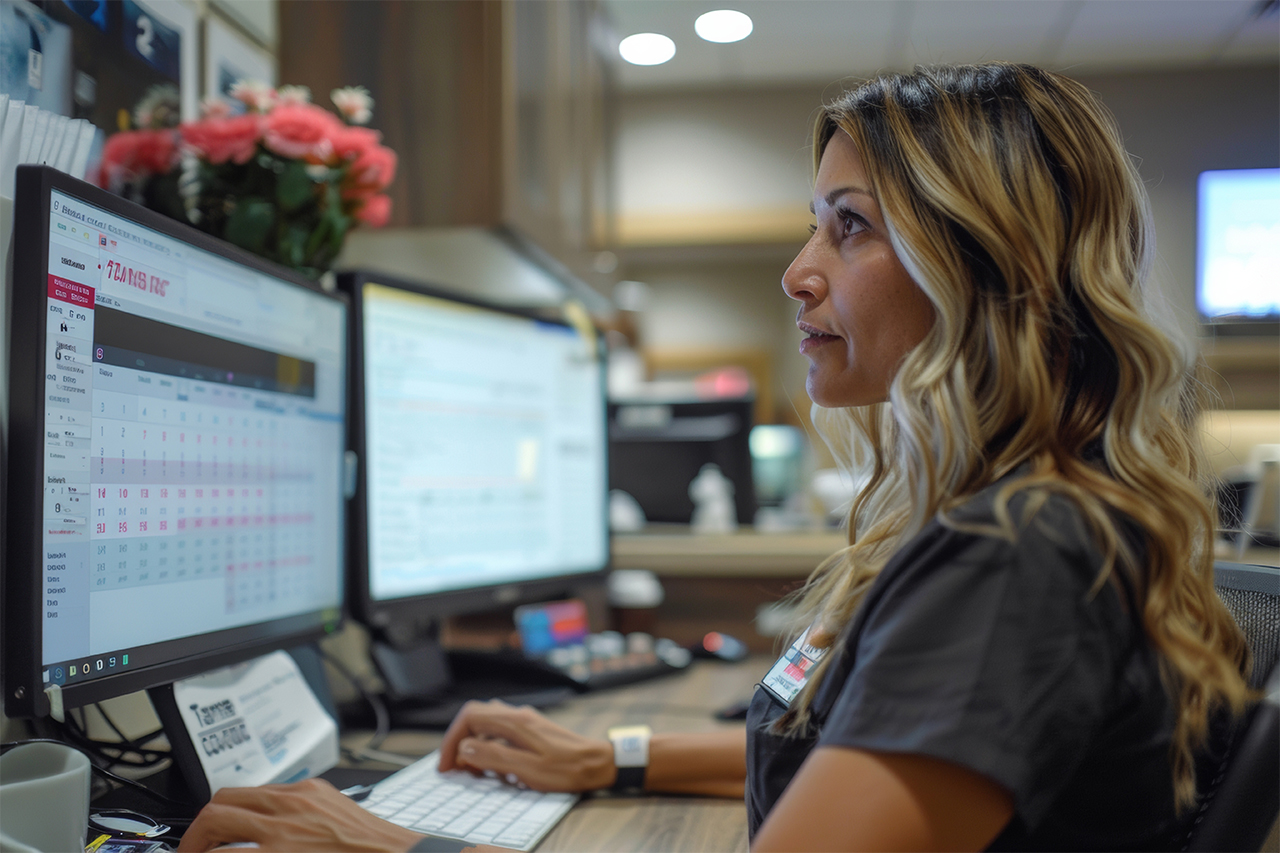If your front desk feels more like mission control at NASA than the first point of contact for your patients, you’re not alone. In 2024, healthcare practices across the country are dealing with staffing shortages, increased patient demands, and a growing to-do list that just won’t quit.
The good news? You don’t always need to hire more people—you need smarter systems. Here’s how to help your front office do more with less (and stay sane while doing it).
What’s causing front desk overload in healthcare practices?
Spoiler alert: It’s not just one thing. The front desk is often overloaded due to a perfect storm of staff burnout, turnover, and outdated workflows.
In fact, a 2023 MGMA survey reported that 56% of healthcare practices are experiencing staff shortages, with administrative positions being the hardest to fill.
What’s making it worse?
- Burnout from repetitive, high-stress tasks like handling nonstop calls and checking in patients
- Manual processes that take too long and leave too much room for error
- Lack of proper tools to handle rising patient volumes efficiently
Where are healthcare front offices losing the most time?
When every second counts, even small inefficiencies can snowball into major slowdowns. Here’s where front desk teams are losing the most time:
- Answering routine phone calls (e.g., “What time is my appointment?” or “Do you take my insurance?”)
- Chasing voicemails and playing phone tag with patients
- Sending manual appointment reminders via phone or email
- Filling out forms and managing insurance verification manually
- Re-entering data across disconnected systems
All of this leads to longer wait times, frustrated patients, and staff who feel like they’re treading water.
What are the top 3 healthcare automations to support a short-staffed front desk?
Automation isn’t about replacing people—it’s about making their jobs easier. With the right tools, your front office can reclaim hours each week and focus on what really matters: creating a great patient experience.
Here are the MVPs of front-desk automation:
Auto-attendant & smart call routing
Automatically directs patients to the right department or provides answers to FAQs (like hours, directions, or insurance). No more tying up staff with routine calls.
Automated appointment reminders (text + email)
A study by the Journal of Medical Internet Research found that SMS reminders can reduce no-show rates by up to 39%.
Voicemail transcription + caller ID integration
Voicemail-to-text tools let staff quickly scan and prioritize messages. When integrated with your patient communication platform, staff can see who’s calling and why—before they even answer.
How to decide what to automate vs. delegate in your healthcare practice?
Not every task should be automated—and not every task needs a human touch. Here’s how to strike the right balance:
Automate when:
- The task is repetitive and follows a predictable pattern (e.g., reminders, intake form delivery)
- It involves simple information delivery (e.g., hours, directions, policies)
- It reduces back-and-forth and speeds up resolution (e.g., online scheduling, pre-visit instructions)
Delegate when:
- The task requires empathy, judgment, or personalization (e.g., billing disputes, complex medical questions)
- Patients need emotional support or reassurance
- A personal touch is critical to patient satisfaction
Think of automation as your first line of defense, freeing up your team to focus on higher-value interactions that require a human touch.
How can I improve front desk efficiency without hiring more staff?
Labor shortages aren’t going away anytime soon. But your team doesn’t have to be stretched to the breaking point. With the right combination of automation, integration, and smart workflows, your front office can stay lean and still deliver exceptional patient experiences.
It’s time to stop surviving the chaos—and start streamlining it.
The Bottom Line: Automation + Integration = A Smarter, Stronger Front Office
When your front office is short-staffed, the answer isn’t always hiring more people—it’s working smarter with the right tools. Automation and integrated communication systems are no longer “nice to have” features—they’re essential for keeping up with patient demand and maintaining a smooth, stress-free operation.
With the right platform in place, your team can:
- Automate repetitive tasks like appointment reminders, intake form delivery, and call routing
- Access all patient communications—calls, texts, emails—in one place
- Prioritize calls and messages with smart caller ID and voicemail-to-text features
- Reduce no-shows and improve patient follow-through
- Spend less time juggling systems and more time engaging meaningfully with patients
Ultimately, automation and integration don’t just relieve the pressure on your team—they create a better experience for everyone, especially your patients.
Even a small shift toward smarter communication tools can add up to big wins: fewer missed calls, faster follow-ups, and a front office that feels calm, confident, and in control.

Want to book more appointments and improve patient experience? Download our free guide, 8 Ways Patient Communication Software Improves the Patient Experience, and discover how tools like automated reminders and real-time messaging can boost efficiency and reduce no-shows.
Download Guide



